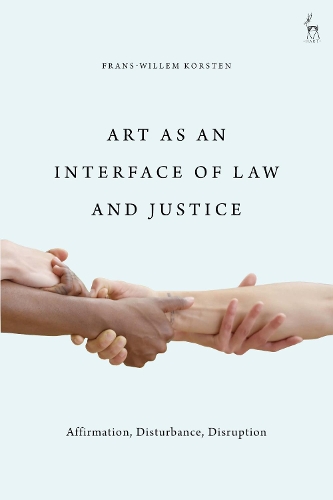
Art as an Interface of Law and Justice: Affirmation, Disturbance, Disruption
(Hardback)
Available Formats
Publishing Details
Art as an Interface of Law and Justice: Affirmation, Disturbance, Disruption
By (Author) Frans-Willem Korsten
Bloomsbury Publishing PLC
Hart Publishing
15th April 2021
United Kingdom
Classifications
Tertiary Education
Non Fiction
Methods, theory and philosophy of law
344.097
Physical Properties
Hardback
216
Width 156mm, Height 234mm
481g
Description
This book looks at the way in which the call for justice is portrayed through art and presents a wide range of texts from film to theatre to essays and novels to interrogate the law. Calls for justice may have their positive connotations, but throughout history most have caused annoyance. Art is very well suited to deal with such annoyance, or to provoke it. This study shows how art operates as an interface, here, between two spheres: the larger realm of justice and the more specific system of law. This interface has a double potential. It can make law and justice affirm or productively disturb one another. Approaching issues of injustice that are felt globally, eight chapters focus on original works of art not dealt with before, including Milo Raus The Congo Tribunal, Elfriede Jelineks Ulrike Maria Stuart, Valeria Luisellis Tell Me How It Ends and Nicolas Winding Refns Only God Forgives. They demonstrate how through arts interface, impasses are addressed, new laws are made imaginable, the span of systems of laws is explored, and the differences in what people consider to be just are brought to light. The book considers the improvement of law and justice to be a global struggle and, whilst the issues dealt with are culture-specific, it argues that the logics introduced are applicable everywhere.
Reviews
A thought-provoking and well-considered book that builds toward a general theory of law and justice but that is also able to include in-depth analyses of multiple different literary/artistic works that span genres. -- Susan Tanner, Louisiana State University Law Center * Hedgehogs and Foxes *
Author Bio
Frans-Willem Korsten holds the chair in 'Literature and Society' at the Erasmus School of Philosophy and is working at the Leiden University Centre for the Arts in Society in the Netherlands.
